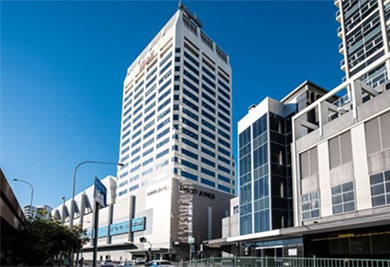What Can Cause Lower Back Pain?
Lower back pain (LBP) or lumbago is a condition involving the muscles and bones of the sore lower back can occur suddenly, in many cases the cause relates to ‘untrained’ muscles or unfamiliar movements.
Pain in the lower back can be caused by a variety of problems within the complex, ack. A interconnected network of spinal muscles, nerves, bones, discs or tendons in the lumbar spine.
Pain, tension or stiffness in the lower back is something that most of us experience at some stage, and in many cases, it settles down after a few days.
Typical sources of lower back pain may include:
- Irritation of the large nerve roots that connect the lower back with the legs
- Inflammation of the smaller nerves that supply the lower back
- Straining of the large paired lower back muscles (erector spinae)
- Damaged bones, ligaments or joints

Symptoms of lower back pain
Symptoms include blunt pain in the lower back that starts after activity, sudden movement, or lifting heavy objects. Lower back pain can also be described as a combination of the following:
- Difficulty moving that can be severe enough to prevent walking or standing
- Pain that also moves around to the groin, buttock or upper thigh, but rarely travels below the knee
- Pain that tends to be achy and dull
- Severe muscle spasms
- Localised soreness upon touch
Lower back pain treatment
With accurate assessment and early treatment, most lower back pain injuries will respond extremely quickly to physiotherapy allowing you to quickly resume pain-free and normal activities of daily living.
While lower back pain treatment will vary depending on your specific diagnosis, treatment will have the following aims.
PHASE I – Back Pain Relief & Protection
Effective treatment techniques in this stage include: Rest, ice, de-loading techniques and ESWT Shockwave therapy. A course of non-steroidal anti-inflammatory drugs such as ibuprofen may also help in this phase.
PHASE II – Restoring Normal ROM and Strength. Early Back Exercises.
As your lower back pain and inflammation settles, your lower back pain may feel better but you are actually more vulnerable for re-injury during this honeymoon period when you don’t have pain but your muscles and ligaments are weak. Restoring normal lumbar spine motion, muscle length and resting tension, muscle strength and endurance, proprioception, balance and gait (walking pattern) is crucial.
Your therapist will commence you on ESWT Shockwave therapy to regenerate the damaged tissues and an abdominal core stability program to facilitate your important muscles that dynamically control and stabilise your lower back.
PHASE III – Restoring Full Function
This phase of treatment is aimed at restoring your back’s function to safely allow you to return to your desired activities. Your therapist will tailor your back-pain rehabilitation to help you achieve your own functional goals.
PHASE IV – Back Exercises – Preventing a Recurrence
Recurrence of lower back pain can occur. The main reason it is thought to recur is due to insufficient rehabilitation. Poor compliance with deep abdominal core muscle exercises. Your therapist will assist you in identifying the best exercises for you to continue indefinitely.



